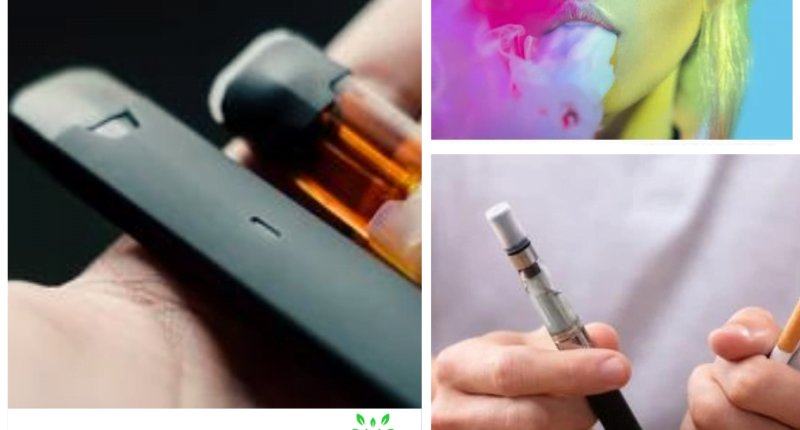What are the “Puff bar side effects?” Vaping has been a popular trend among youngsters for several years, and it has also emerged as a significant public health concern. Puff Bars are one of the recent additions to the vaping market, and they have gained immense popularity in a short time. Puff Bar is a disposable vape device that is easy to use and contains nicotine and other harmful chemicals. However, the use of Puff Bars can lead to several side effects that users should be aware of. [1]
In this article, we will discuss the side effects of Puff Bars and what you need to know before using them.
What Are Puff Bars?
Puff Bars are disposable vaping devices that come pre-filled with nicotine salt e-liquid. They are designed to be easy to use and require no maintenance or refilling. Puff Bars come in a variety of flavors and have become popular among young people who are looking for a discreet way to vape.
How Do Puff Bars Work?
Puff Bars work by heating a liquid that contains nicotine, flavorings, and other chemicals. When the liquid is heated, it produces a vapor that users inhale. Puff Bars are disposable, and once the liquid is used up, the device is thrown away.
Puff Bar Side Effects
While Puff Bars claim to be a healthier alternative to smoking, they are not without their side effects. Here are some of the potential side effects of using Puff Bars:
1. Nicotine Addiction
Puff Bars contain nicotine, which is an addictive substance. Nicotine can cause addiction and dependence, and quitting nicotine can be difficult for some people. Puff Bars have been linked to nicotine addiction, especially among young people.
2. Respiratory Problems
Vaping can cause respiratory problems, including coughing, wheezing, and shortness of breath. Puff Bars contain chemicals that can irritate the lungs and cause respiratory problems.
3. Cardiovascular Problems
Vaping can also cause cardiovascular problems, including an increased heart rate and high blood pressure. Puff Bars have been linked to cardiovascular problems, especially among people with pre-existing heart conditions.
4. Headaches and Dizziness
Puff Bars can cause headaches and dizziness, especially in new users. These symptoms can be more severe in people who are sensitive to nicotine.
5. Irritation of the Mouth and Throat
Puff Bars can irritate the mouth and throat, causing soreness and discomfort. This can be more severe in people who are sensitive to chemicals or have pre-existing mouth or throat conditions.
6. Dry Mouth and Throat
Puff Bars can cause dehydration and dryness in the mouth and throat. Additionally, the act of vaping can also cause dryness in the mouth and throat due to the heat and chemicals present in the vapor. It is important to stay hydrated while using Puff Bars or any other electronic cigarette to help alleviate these symptoms.
7. Popcorn lung
Another potential side effect of using Puff Bar is the risk of developing popcorn lung. Popcorn lung is a condition caused by exposure to diacetyl, a chemical used in some e-liquids to create a buttery flavor. While Puff Bar claims to be diacetyl-free, some studies have found that some e-cigarettes may still contain this harmful chemical.
Overall, while Puff Bar may be marketed as a safer alternative to smoking, it is not without its potential risks and side effects. Users should be aware of these risks and make an informed decision about whether or not to use this product.
Don’t miss | How long do germs stay in your mouth after kissing?
How to Reduce the Side Effects of Puff Bars
While the best way to avoid these side effects is to quit using Puff Bars altogether, there are a few steps you can take to reduce the risk of experiencing them:
- Stay hydrated: Nicotine is a diuretic, which means it can dehydrate your body. Make sure to drink plenty of water before and after using Puff Bars to stay hydrated and reduce the risk of side effects.
- Use Puff Bars in moderation: Limit your use of Puff Bars to reduce the risk of side effects. If you find yourself using Puff Bars frequently, try switching to a lower nicotine strength or quitting altogether.
- Take breaks between puffs: Give your body a chance to recover between puffs. Take a few deep breaths or drink some water before using Puff Bars again.
- Choose the right flavor: Some flavors may be more irritating to your throat than others. If you experience throat irritation, try switching to a milder flavor.
- Avoid using Puff Bars before bed: Nicotine can interfere with sleep, so avoid using Puff Bars before bed to get a good night’s rest.
- Be aware of your body’s reactions: If you experience any side effects, stop using Puff Bars and consult with your healthcare provider.
Copyright © 2022 Soundhealthandlastingwealth.









